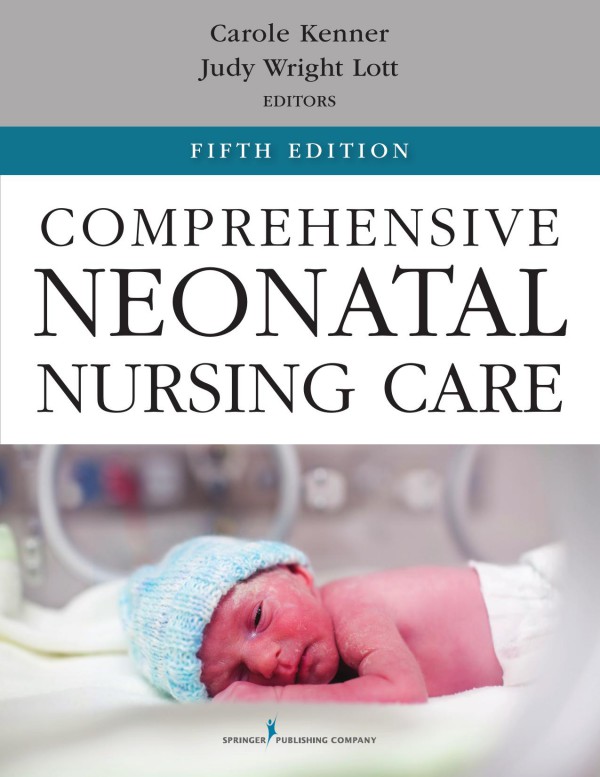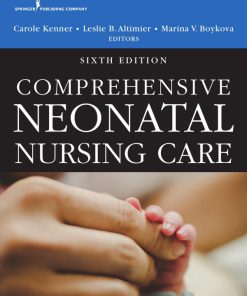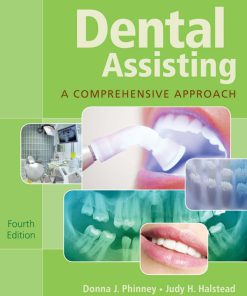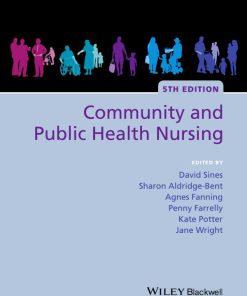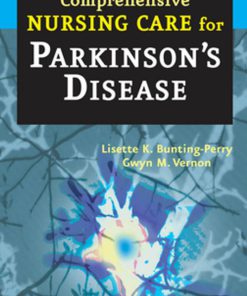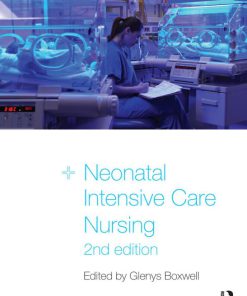Comprehensive Neonatal Nursing Care 5th Edition by Carole Kenner, Judy Wright Lott 0826109756 9780826109750
$50.00 Original price was: $50.00.$25.00Current price is: $25.00.
Authors:Kenner, Carole PhD, RNC-NIC, NNP, FAAN,Lott, Judy DSN, RN, BC-NNP, FAAN , Author sort:Kenner, Carole PhD, RNC-NIC, NNP, FAAN,Lott, Judy DSN, RN, BC-NNP, FAAN , Published:Published:Feb 2015
Comprehensive Neonatal Nursing Care 5th Edition by Carole Kenner, Judy Wright Lott – Ebook PDF Instant Download/Delivery. 0826109756, 9780826109750
Full download Comprehensive Neonatal Nursing Care 5th Edition after payment
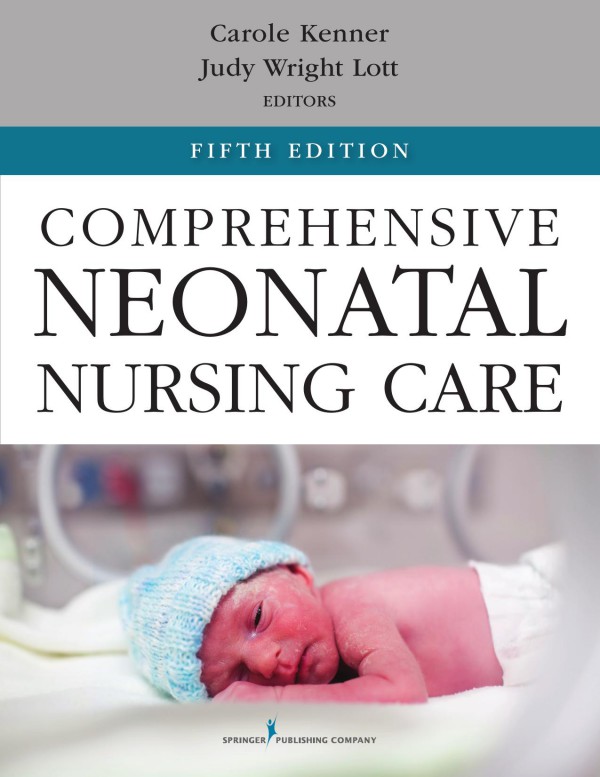
Product details:
ISBN 10: 0826109756
ISBN 13: 9780826109750
Author: Carole Kenner, Judy Wright Lott
“This book provides a complete look at neonatal healthcare delivery. This edition includes discussions of contemporary topics of interest, such as informatics, genetics, global health, and family-centered care, which are vital to providers caring for neonates today. The case studies and the evidence-based practice dialogues at the end of each chapter provide great opportunities for further reflection. The book is useful to a wide audience in nursing, including undergraduate and graduate nursing students, practicing neonatal and pediatric nurses, and advanced practice nurses who care for neonates.” Score: 92, 4 Stars.–Doody’s Medical Reviews
This ‘classic’ has been thoroughly updated to incorporate the most up-to-date research findings and strategies for providing cost-effective and evidence-based care. New chapters address emerging infections, the late preterm infant, and neonatal care from a global perspective. Included are updated neonatal care protocols and procedures, neuroprotective risk factors, new treatments, and new trends in developmental care. Text integrates the Institute of Medicine’s (10M) five competencies, reflects the Affordable Healthcare Act and the Robert Wood Johnson and 10M report “The Future of Nursing.”
The text continues to provide neonatal care from a physiologic and pathophysiologic approach, with a major emphasis on nursing management at the bedside and advanced practice level. Each neonatal body system is presented, along with E-B interventions to assist in understanding the ‘why’ behind what is seen in the clinical area. Integrative management is threaded through the text along with extensive research findings to support practice strategies and rationales for sound clinical decision-making. Topics of recent interest include iatrogenic complications, neonatal pain, use of computers or other technology in neonatal care, and neonatal AIDS. Case studies enhance understanding of both common and rare neonatal conditions.
Comprehensive Neonatal Nursing Care 5th Table of contents:
Unit I: Prenatal Considerations and Care
Chapter 1: Fetal Development: Environmental Influences and Critical Periods
Early Fetal Development
Fertilization
Cleavage
Implantation
Formation of the Bilaminar Disk
Formation of the Trilaminar Embryonic Disk: The Third Week of Development
Placental Development and Function
Placental-Fetal Circulation
Placental Function
Embryonic Period: Weeks 4 Through 8
Folding of the Embryo
Organogenesis: Germ Cell Derivatives
Development of Specific Organs and Structures
Nervous System
Cardiovascular System
Respiratory System
Muscular System
Skeletal System
Gastrointestinal System
Urogenital System
Fetal Period: Week 9 Through Birth
Week 9 to 12
Week 13 to 16
Week 17 to 20
Week 21 to 25
Week 26 to 29
Week 30 to 34
Week 35 to 36
Week 37 to 40
Developmental Risks
Congenital Defects
Critical Periods of Human Development
Environmental Factors
Infectious Agents
Drugs/Medications
Illicit Drugs
Maternal Disease
Other
Summary
Case Study
References
Online Resources
References
Chapter 2: Prenatal, Intrapartal, and Postpartal Risk Factors
Millennium Development Goals
Perinatal Outcomes Indicators
Preterm Birth
Birth Weight and IUGR
IMR
Epidemiologic Paradox
Maternal Risk Factors
Maternal Age
Paternal Factors
Life Course Determinants of Birth Outcomes and Weathering
Psychological Stress in Pregnancy
Obstetric Factors
Prenatal Care
Parity
Interpregnancy Level
Assistive Reproductive Technology
Postterm Pregnancy
HCBs
Smoking
Substance Abuse
Nutrition
Over-the-Counter and Complementary Drugs
Environmental Influences
Other Emerging Risk Factors
Maternal Medical and Obstetric Conditions
Diabetes
Hypertension in Pregnancy
PROM
Maternal Infections
Abruptio Placenta
Postpartum Risk Factors
Drugs Excreted in Maternal Milk
Sudden Infant Death Syndrome
Child Abuse
Abusive Head Trauma/Shaken Baby Syndrome
MSBP
Perinatal Care in Developing Nations
Summary
Case Study
Online Resources
References
Unit II: Intrapartal and Newborn Care
Chapter 3: Resuscitation and Stabilization of the Newborn and Infant
Causes of Cardiorespiratory Depression in the Newborn
Trauma
Asphyxia (Intrauterine)
Medication
Malformation
Sepsis
Shock (Hypovolemia)
Preparation for Delivery
Personnel
Equipment and Supplies
Good Communication and Teamwork
General Considerations
Airway Control
Ventilation and Oxygenation
Free-Flow Administration of Oxygen
Ventilation
Continuous Positive Airway Pressure
Positive Pressure Devices
Methods of Ventilation
Medications
Care of the Family During Resuscitation and Stabilization
Summary
Case Study
Online Resources
References
Chapter 4: Assessment of the Newborn and Infant
First Neonatal Assessment and the Apgar Score
Other Considerations for the Initial Neonatal Assessment
Evaluation of Transition
Newborn Examination
Discharge Examination
Outpatient Examination
Environment
Components of a Comprehensive History
Interviewing the Parents
Physical Assessment Techniques
Assessment of Size and Growth
Assessment of GA
Clinical Assessment of Nutritional Status
Measurement Techniques
Physical Examination of the Neonate
Variations and Abnormal Findings on Physical Examination
Health Maintenance in the First Year of Life
Immunizations
Health Maintenance for High-Risk Infants in the First Year of Life
History
Growth and Nutrition
Physical Examination
Laboratory Tests and Monitoring Examinations
Immunizations
Psychosocial Needs
Summary
Case Study
Online Resources
References
Chapter 5: Normal Term Newborn
Admission
Vital Signs
Medications
Measurements
The First Bath
Cord Care
Security
Back to Sleep
Daily Care
Circumcision
Neonatal Thermoregulation
Nonshivering Thermogenesis
Cold Stress
Management
Hyperthermia
Glucose Homeostasis
Screening
Management
Hyperbilirubinemia
Physiologic Jaundice
Breastfeeding Jaundice
Breast Milk Jaundice
Pathologic Jaundice
Acute Bilirubin Encephalopathy and Kernicterus
Assessment
Management
Feeding the Healthy Newborn
Nursing Interventions that Promote Successful Breastfeeding
Skin-to-Skin
Maternal–Infant Separation Only When Medically Necessary
Pacifier Use
Adequacy of Breastfeeding
Breastfeeding Follow-Up After Discharge
Formula Feeding
Discharge Screening
Hearing Screening
Newborn Screening
Emerging Screening
When to Screen
Discharge
Summary
Case Study
Online Resources
References
Unit III: Systems Assessment and Management of Disorders
Chapter 6: Respiratory System
Embryologic Development of the Lung
Newborn Pulmonary Physiology and the Onset of Breathing
Blood Gas Analysis and Acid–Base Balance
Assessment of the Neonate with Respiratory Distress
History
Physical Examination of the Respiratory System
Common Disorders of the Respiratory System
RDS
Transient Tachypnea of the Newborn
Pneumonia
Persistent Pulmonary Hypertension of the Newborn
MAS
Pulmonary Hemorrhage
Pleural Effusions
Apnea
Congenital Anomalies that Affect Respiratory Function
Diaphragmatic Hernia
Congenital Heart Disease
Choanal Atresia
Cystic Hygroma
Pierre Robin Sequence
Collaborative Management of Infants with Respiratory Disorders
Supportive Care
Assessment and Monitoring
Environmental Considerations
Family Care
Summary
Case Study
Online Resources
References
Chapter 7: Cardiovascular System
Cardiovascular Adaptation
Fetal Circulation
Extrauterine Circulation
Normal Cardiac Function
Cardiac Valves
Cardiac Cycle
Cardiac Output
Autonomic Cardiac Control
Cardiac Assessment
Methods of Assessment
Inspection
Palpation
Auscultation
Identification of Heart Sounds
Cardiac Murmurs
Systolic Murmurs
Location
Quality
Diastolic Murmurs
Continuous Murmurs
Other Murmurs
Congenital Heart Defects
Etiology
Incidence
Defects With Communication Between the Systemic and Pulmonary Circulations With Left-to-Right Shunt
Patent Ductus Arteriosus
Patent Ductus Arteriosus in the Term Newborn
Patent Ductus Arteriosus in the Preterm Newborn
Ventricular Septal Defect
Atrial Septal Defect
Endocardial Cushion Defects
Persistent Truncus Arteriosus
Defects That Have Obstructions of the Vascular or Valvular Systems, With or Without Right-to-Left Sh
Aortic Stenosis
Tetralogy of Fallot (TOF)
Pulmonary Atresia
Pulmonary Stenosis
Hypoplastic Left Heart Syndrome
Coarctation of the Aorta
Defects With Abnormalities in the Origin of the Pulmonary Arteries or Veins
Transposition Defects
Complete Transposition of the Great Arteries or Vessels
Total Anomalous Pulmonary Venous Return (TAPVR)
Postoperative Treatments
Congenital Arrhythmias
Congenital Complete Heart Block
Supraventricular Tachycardia
Congestive Heart Failure
Subacute Bacterial Infective Endocarditis
Family Support
Conclusion
Case Study
Online Resources
References
Chapter 8: Gastrointestinal System
Embryology of the GI Tract
Foregut
Midgut
Hindgut
Physiology of the GI Tract
Structure
Circulation
Motility
Immunity
Maturation of GI Function
Bacterial Colonization
Delayed Transit
Assessment of the GI Tract
History
Physical Assessment
Related Findings
Risk Factors
Diagnostic Procedures
Collaborative Management
General Principles
Gastric Decompression
Fluid and Electrolytes
Thermoregulation
Positioning
Prevention of Infection
Pain Management
Nutrition
General Preoperative Management
General Postoperative Management
Ostomy Care
Complications
Consideration of Ethical Issues
Management of Problems with Ingestion
Cleft Lip and Palate
Esophageal Atresia/TEF
Gastroesophageal Reflux
Pyloric Stenosis
Management of Problems with Digestion
Biliary Atresia
Duodenal Atresia
Jejunal/Ileal Atresia
Omphalocele
Gastroschisis
Malrotation with Volvulus
Management of Problems with Elimination
Hirschsprung Disease
Small Left Colon
Meconium Ileus
Meconium Plug
Anorectal Agenesis
Intussusception
NEC
Other GI Disorders
Short-Bowel Syndrome
Gastric Perforations
Peptic Ulcer
Umbilical Hernia
Lactobezoars
Support of Family with an Infant with a GI System Disorder
Summary
Case Study
Online Resources
References
Chapter 9: Metabolic Problems
General Principles: The Neonate with a Metabolic Disorder
Pathophysiology of IEMs
Clinical Manifestations of IEMs
Diagnosis of IEMs
Urea Cycle Disorders
Pathophysiology of UCDs
Clinical Manifestations of UCDs
Diagnosis of UCDs
Management of UCDs
Disorders of Amino Acid Metabolism
Nonketotic Hyperglycinemia (NKH)
Hereditary Tyrosinemia
Transient Tyrosinemia
PKU
Disorders of Organic Acid Metabolism
MSUD
Isovaleric Acidemia
Propionic Acidemia
MMA
FAODs
Pathophysiology of FAODs
Clinical Manifestations of FAODs
Diagnosis of FAODs
Management of FAODs
Multiple Acyl-CoA Dehydrogenase Deficiency (Glutaric Aciduria Type II)
Congenital Lactic Acidoses
PDH Deficiency
PCD
Disorders of Carbohydrate Metabolism
Galactosemia
Hereditary Fructose Intolerance
Fructose-1,6-Bisphosphatase Deficiency
Glycogen Storage Disease
Peroxisomal Disorders
Pathophysiology
Clinical Manifestations
Diagnosis
Management
Lysosomal Disorders
Niemann-Pick Type C
Gaucher Disease
GM1 Gangliosidosis
Mucopolysaccharidoses
Glycogen Storage Disease Type II (Pompe’s Disease)
Disorders of Cholesterol Synthesis
Smith-Lemli-Opitz Syndrome
Disorders of Metal Metabolism
Molybdenum Cofactor Deficiency
Summary
Case Study
Online Resources
References
Chapter 10: Endocrine System
The Endocrine System
Fetal Origins of Adult Disease
Neonatal Endocrine Disorders
Pituitary Gland and Hypothalamus
Disorders of the Anterior Pituitary
Congenital Hypopituitarism
Disorders of the Posterior Pituitary
Diabetes Insipidus
Syndrome of Inappropriate Antidiuretic Hormone
Thyroid Gland
Fetal and Neonatal Thyroid Development
Congenital Hypothyroidism
Thyroid Dysgenesis
Thyroid Dyshormonogenesis
Thyroid-Binding Globulin Deficiency
Hypothalamic-Pituitary Hypothyroidism
Thyroid Hormone Resistance
Clinical Manifestations of Congenital Hypothyroidism
Diagnosis of Congenital Hypothyroidism
Management of Hypothyroidism
Transient Disorders of Thyroid Function
Transient Hypothyroxinemia of Prematurity
Nonthyroidal Illness
Transient Primary Hypothyroidism
Transplacental Passage of Drugs or Antibodies
Hyperthyroidism (Neonatal Graves’ Disease)
Adrenal Gland
Fetal Adrenal Gland
Neonatal Adrenocortical Function
Adrenal Disorders in the Neonate
Transient Adrenocortical Insufficiency of Prematurity
Adrenal Hemorrhage
Congenital Adrenal Hyperplasia
Ambiguous Genitalia
Sexual Development in the Fetus
Internal Genitalia
External Genitalia
Disorders of Sexual Development
46XX DSD Trimester
46XY DSD
Androgen Insensitivity Syndrome
Testosterone Biosynthetic Defects
5α-Reductase-2 Deficiency
Gonadal Dysgenesis
Ovotesticular DSD
General Principles of Management of DSDs
Pancreas
Disorders of the Pancreas
Infant of a Diabetic Mother
Neonatal Diabetes Mellitus
Congenital Hyperinsulinism
Cystic Fibrosis
Summary
Case Study
Online Resources
References
Chapter 11: Immune System
Assessment and Management of the Infant with Suspected or Proven Infection
Incidence of Neonatal Infection
Clinical Signs of Infection
Risk Factors
Diagnostic Work-Up
Differential Diagnosis
Prognosis
Management
Antimicrobial Agents
Types of Neonatal Infection
Bacterial Infections
Neonatal Meningitis
Congenital Infections
Fungal Agents
Nosocomial Infections
Infection Control Policies
Summary
Case Study
Acknowledgment
Online Resources
References
Chapter 12: Integumentary System
Skin Structure and Function
Developmental Variations
Thickness of the Stratum Corneum and Permeability
Dermal Instability
Diminished Cohesion
Skin pH
Melanin Production
Assessment and Physiologic Variations
Pigmentary Lesions
Lesions Related to the Birth Process
Dermatologic Diseases
Blistering Diseases
Infections of the Skin
Scaling Disorders
Skin Care Practices
Bathing
Emollients
Disinfectants
Adhesives
Transepidermal Water Loss
Management of Skin Care Problems
Skin Assessment
Skin Excoriations
Nutritional Deficiencies
Intravenous Extravasations
Diaper Dermatitis
Management
Evidence-Based Skin Care Guideline
Case Study
Summary
Online Resources
References
Chapter 13: Hematologic System
Overview of the Hematologic System
Hematopoiesis
Red Blood Cells
Hemoglobin
Erythropoietin
White Blood Cells
Platelets
Blood Volume
Blood Group Type
Hemostatic System
Initial Steps in Hemostasis
Vascular Spasm
Platelet Plug Formation
Coagulation
Assessment of Hematologic Function
Common Hematologic Disorders
Blood Group Incompatibilities
ABO Incompatibility
Rh Incompatibility
Erythroblastosis Fetalis
Bilirubin Metabolism and Hyperbilirubinemia
Kernicterus
Nonimmune Causes of Hyperbilirubinemia
Increased Red Blood Cell Breakdown
Interference With Bilirubin Conjugation
Treatment of Hyperbilirubinemia
Side Effects of Exchange Transfusion
Anemia
Pathophysiology
Common Causes of Pathologic Anemia in the Newborn
Red Blood Cell Destruction and Hemolysis
Maternal–Fetal Blood Group Incompatibilities
Differential Diagnosis
Treatment
Physiologic Anemia of the Newborn and Anemia of the Premature Infant
Treatment
Polycythemia
Common Coagulation Disorders in the Newborn
Hemorrhagic Disease of the Newborn
Hemophilia
Von Willebrand Disease
Thrombocytopenia
Neonatal Factors
Disseminated Intravascular Coagulopathy
Differential Diagnosis of Newborn Coagulopathies
Collaborative Management of a Coagulopathy
Support of the Family of the Infant with Hematologic Disorder
Blood Component Replacement Therapy
Whole Blood
Packed Red Blood Cells
Washed Red Blood Cells
Frozen Deglycerolized Red Cells
Fresh Frozen Plasma
Platelets
Granulocytes
Cryoprecipitate
Factor Concentrates
Protocols
Example of Transfusion Guidelines
Case Study
Online Resources
References
Chapter 14: Musculoskeletal System
Embryology
Assessment
Types of Musculoskeletal Dysfunction
Osteogenesis Imperfecta
Types of OI and Clinical Presentation
Diagnosis
Collaborative Management
Skeletal Dysplasia
Achondroplasia
Hypochondroplasia
Thanatophoric Dysplasia
Differential Diagnosis
Management
Arthrogryposis
Pathogenesis
Clinical Manifestations
Diagnosis
Management
Prognosis
Developmental Dysplasia of the Hip
Incidence and Risk Factors
Diagnosis and Clinical Manifestations
Collaborative Management
Parent and Family Education and Support
Long-Term Consequences and Complications
Clubfoot
Pathology
Clinical Manifestations
Collaborative Management
Syndactyly
Pathology
Treatment
Prognosis
Collaborative Management
Polydactyly
Collaborative Management
Amniotic Band Syndrome
Diagnosis
Pathophysiology
Collaborative Management
Birth Trauma
Clinical Manifestations
Diagnosis
Collaborative Management
Parental Education and Support
Congenital Muscular Torticollis
Pathophysiology
Diagnosis
Collaborative Management
Craniosynostosis
Pathology and Clinical Characteristics
Diagnosis and Management
Tar Syndrome: Thrombocytopenia-Absent Radius
Pathology
Management
Summary
Case Study
Online Resources
References
Chapter 15: Neurologic System
CNS Development and Structural Abnormalities
Neurulation
Prosencephalic Development
Neuronal Proliferation
Neuronal Migration
Organization
Myelinization
Neurologic Assessment
History
Physical Examination
Neurologic Examination
Diagnostic Techniques
General Management
Neonatal Seizures
Pathophysiology
Biochemical Effects of Seizures
Seizures in Neonates Compared with Those in Older Children and Adults
Assessment
Types of Seizures
Management
Outcomes
HIE
Pathophysiology
Assessment
Management
Outcomes
Germinal Matrix-Intraventricular Hemorrhage
Pathophysiology
Assessment
Management
Management of Progressive Ventricular Dilation
Outcomes
White-Matter Injuries (WMI) in Preterm Infants
Pathophysiology
Assessment
Management
Outcomes
Cerebellar Injury in Preterm Infants
Birth Injuries
Extracranial Hemorrhage
Other Types of Intracranial Hemorrhage
Skull Fracture
Spinal Cord Injury
Peripheral Nerve Injuries
Summary
Case Study
Online Resources
References
Chapter 16: Auditory System
Anatomy of the Ear
Physiology of Audiologic Function
External Ear
Middle Ear
Inner Ear
Hearing Impairment
Types of Hearing Impairment
Identification of the Hearing-Impaired Infant
Physical Examination
Inspection of the Ear
Inspection of the Middle Ear and Tympanic Membrane
Inspection of the Head and Neck
History
Family History
Hereditary Hearing Loss
Autosomal Dominant Inheritance
Autosomal Recessive Inheritance
Differential Diagnosis
Diagnostic Test
Screening Methods for Identification of Hearing Loss
Peripheral Measurements of Hearing Function
Development of a Treatment Plan for the Hearing-Impaired Neonate
Cochlear Implants
Implementation and Evaluation
Parental Support
Online Resources
References
Chapter 17: Ophthalmic System
Embryology
Assessment
History
Examination
Eye Drops
Neonatal Conjunctivitis
Aseptic Neonatal Conjunctivitis
Chlamydial Conjunctivitis (Inclusion Conjunctivitis)
Gonorrheal Conjunctivitis
Staphylococcal Conjunctivitis
Herpes Simplex Conjunctivitis
Infectious Conjunctivitis Caused by Other Microorganisms
Lacrimal Dysfunction
Obstructed Nasolacrimal Duct
Mucocele
ROP
Pathophysiology
Risk Factors
Treatment
Collaborative Care
Congenital Defects
Aniridia
Persistent Hyperplastic Primary Vitreous
Capillary Hemangioma of the Eyelid
Ptosis
Congenital Glaucoma
Congenital Cataracts
Retinoblastoma
Congenital Infections
CMV Infection
Rubella
Herpes Simplex Virus
Varicella
Toxoplasmosis
Lymphocytic Choriomeningitis Virus
Other Disorders that Affect the Eyes
Fetal Alcohol Syndrome
Maternal Diabetes
PVL
IVH
Summary
Case Study
Online Resources
References
Chapter 18: Genitourinary System
Embryologic Development of the Urogenital System
The Urinary System
Physiology of Kidney Function
Renal Blood Flow
Glomerular Filtration Rate
Secretion and Reabsorption
Assessment of the Genitourinary System
History
Physical Assessment
Inspection
Palpitation
Percussion
Related Findings
Urine Collection
Urinalysis
Urine Chemistries
Blood Urea Nitrogen and Creatinine
Urine Culture
Radiologic Evaluation
Renal Ultrasonography
Prenatal Ultrasound
Voiding Cystourethrogram (VCUG)
Renal Scintigraphy with Dimercaptosuccinic Acid (DMSA) Scan
Diuretic Renography
Computed Tomography (CT) and Magnetic Resonance Imaging (MRI)
Management
Fluid, Electrolytes, and Nutrition
Skin Management
Respiratory Management
General Preoperative Management
General Postoperative Management
Parental Support
Urinary Tract Infections
Pathophysiology
Risk Factors
Clinical Manifestations
Diagnosis
Prognosis
Collaborative Management
Nursing Management
Circumcision
Nursing Management
Acute Renal Failure
Pathophysiology
Risk Factors
Clinical Manifestations
Diagnosis
Prognosis
Collaborative Management
Nursing Management
Potter’s Syndrome
Pathophysiology
Diagnosis
Collaborative Management
Unilateral Renal Aplasia
Pathophysiology
Clinical Manifestations
Collaborative Management
Cystic Kidney Disease
Polycystic Kidney Disease
Pathophysiology
Risk Factors
Clinical Manifestations
Diagnosis
Prognosis
Collaborative Management
MKD
Pathophysiology
Risk Factors
Clinical Manifestations and Diagnosis
Collaborate Management
Prune-Belly Syndrome (Eagle-Barrett Syndrome)
Pathophysiology
Risk Factors
Clinical Manifestations
Diagnosis
Prognosis
Collaborative Management
Nursing Management
Extrophy of the Bladder
Pathophysiology
Risk Factors
Clinical Manifestations
Diagnosis
Prognosis
Collaborative Management
Nursing Management
RVT
Pathophysiology
Risk Factors
Clinical Manifestations
Diagnosis
Prognosis
Collaborative Management
Nursing Management
Hydronephrosis
Pathophysiology
Clinical Manifestations
Diagnosis
Prognosis
Collaborative Management
Nursing Management
Obstructive Uropathy
Pathophysiology
Risk Factors
Clinical Manifestations
Diagnosis
Prognosis
Collaborative Management
Posterior Urethral Valves
Pathophysiology
Risk Factors
Clinical Manifestations
Diagnosis
Prognosis
Collaborative Management
Nursing Management
Hydrocele
Pathophysiology
Risk Factors
Clinical Manifestations
Diagnosis
Collaborative Management
Nursing Management
Inguinal Hernia
Pathophysiology
Risk Factors
Prognosis
Clinical Manifestations
Diagnosis
Collaborative Management
Nursing Management
Testicular Torsion
Pathophysiology
Risk Factors
Prognosis
Clinical Manifestations
Collaborative Management
Nursing Management
Nephroblastoma (Wilms’ Tumor)
Pathophysiology
Risk Factors
Clinical Manifestations
Diagnosis
Prognosis
Collaborative Management
Summary
Case Study
Online Resources
References
Unit IV: Special Considerations
Chapter 19: Fluids, Electrolytes, Vitamins, and Minerals
Water and Electrolytes
Water
Changes in Water Distribution
Water Balance and Body Metabolism
Water Requirements
Postnatal Adaptation
Water-Soluble Vitamins
Thiamine (Vitamin B1)
Riboflavin (Vitamin B2)
Vitamin B6
Cyanocobalamin (Vitamin B12)
Folic Acid
Ascorbic Acid (Vitamin C)
Niacin
Fat-Soluble Vitamins
Vitamin A
Vitamin D
Vitamin E
Vitamin K
Trace Minerals
Zinc
Copper
Nursing Management
Assessment and Evaluation in Fluid and Electrolyte Therapy
Summary
Case Study
Online Resources
References
Chapter 20: Nutrition Management of Premature Infants
Nutrients
Protein
Fat
Carbohydrate
Summary
Vitamins, Macrominerals, and Trace Minerals
Gastrointestinal Function of the Premature Infant
Summary
Parenteral Nutrition (PN)
Indications
Energy
Glucose
Protein
Lipids
Carnitine
Fluid and Electrolytes
Calcium, Phosphorus, and Magnesium
Vitamins
Trace Minerals
Enteral Nutrition
Human Milk
Infant Formulas
Feeding Management
Feeding Method
Feeding Assessment
Growth and Growth Charts
Biochemical Indices
Postdischarge Nutrition
Summary
Case Study
Online Resources
References
Chapter 21: Neonatal and Infant Pharmacology
Drug Therapy: Evidence-Based Medicine
Pediatric Labeling
Pediatric Dosing Methods
Adverse Drug Effects
Medication Errors
Developmental Pharmacokinetics
Absorption
Distribution
Metabolism
Elimination
Therapeutic Drug Monitoring
Fetal and Infant Exposure to Maternal Medications
Fetal Exposure
Lactation Exposure
Medication Administration
Oral Administration
Intravenous Administration
Intraosseous Administration
Intranasal Administration
Aerosol Administration
Medication Administration in Extracorporeal Membrane Oxygenation
Medication Shortages
Summary
Case Study
Online Resources
References
Chapter 22: Emerging Technologies in Neonatal Care: Health Care Simulation for Neonatal Care
What is Health Care Simulation?
History of Health Care Simulation
Simulation and Patient Safety
Simulation in Neonatal Care
Implementation of Simulation in Neonatal Care
Scenario Development
Step 1: Identification of the Purpose of the Scenario
Step 2: Identification of the Learning Objectives
Step 3: Identification of the Learners/Participants
Step 4: Identification of a Clinical Case to Create in Order to Achieve the Desired Learning Objecti
Step 5: Completion of a Scenario Design Template
Step 6: Development of Debriefing Script Based on Learning Objectives
Step 7: Practice and Rehearsal of the Scenario
Step 8: Implementation and Evaluation of the Simulation Scenario
Summary
Case Study
Online Resources
References
Chapter 23: Pain in the Newborn and Infant
Defining Pain in Infants
Developmental Neurophysiology of Pain
Peripheral Transduction and Transmission
Central Mechanisms and Modulation
Neurodevelopment of Pain Perception
Long-Term Consequences of Pain
Clinical Assessment of Pain
Multidimensional Pain Tools
Factors that Influence Pain
Management of Neonatal Pain
Prevention of Pain
Nonpharmacologic Comfort Management
Pharmacologic Management
Management of Specific Pain Types
Procedural Pain
Postoperative Pain
Preemptive Analgesia for Mechanical Ventilation
Pain Management at EOL
Parents
Neonatal Nurse’s Role and Responsibilities
Summary
Case Study
References
Chapter 24: Fetal Therapy
Historical Overview
Fetus as Patient: Maternal–Fetal Risks and Benefits
Ethical Considerations
Evolution of Fetal Surgical Techniques
Open Fetal Surgery
Minimally Invasive Fetal Surgery
Anesthesia
Fetal Malformations Amenable to Surgical Correction
Obstructive Uropathy
Congenital Diaphragmatic Hernia
Congenital Cystic Adenomatoid Malformation
Sacrococcygeal Teratoma
Congenital High Airway Obstructive Syndrome
Complications of Twin Pregnancies
Myelomeningocele
Amniotic Band Syndrome
Hypoplastic Left Heart Syndrome
Multidisciplinary Collaborative Approach to Fetal Therapy
Considerations for Collaborative Care Planning
Fetal Therapy: New Horizons
Future of Fetal Surgery: Team Responsibilities
Summary
Case Study
Online Resources
References
Chapter 25: Surgical Considerations in the Newborn and Infant
Antenatal Considerations
Transportation of Infants for Surgery
Surgical Neonatal Intensive Care Units
Staffing
Family
Classification of Neonatal Surgery
Preanesthetic Evaluation
Preparation for Surgery
Temperature Control
Fluid and Electrolyte Balance
Maintenance of Glucose Levels
Acid–Base Balance
Drugs
Monitoring
Intravascular Lines
Nurse’s Role
Preoperative Checklist
During Surgery
Anesthesia
Stress Response
Thermoregulation
Fluid and Electrolyte Balance
Monitoring
Postoperative Care
Oxygenation and Ventilation
Pain Management
Fluid and Electrolyte Balance
Nutrition
Wound Care
Outcomes
Summary
Case Study
Online Resources
References
Chapter 26: Emerging Infections
Antimicrobial Resistance
Genetic Mechanisms of Resistance
Pharmacodynamics and Resistance
Selective Antibiotic Pressure
MRSA
Extended Spectrum Beta-Lactamase-Producing Organisms
Vancomycin-Resistant Enterococcus
Multidrug-Resistant Organisms
Basesia
Influenza A (H1N1)
Human Immunodeficiency Virus
Measles
Combating Emerging Infections
Antimicrobial Stewardship
Summary
Case Study
Online Resources
References
Unit V: Vulnerable Populations
Chapter 27: Newborn or Infant Transplant Patient
Liver Transplantation in Infants and Children
Etiology
Biliary Atresia
Errors of Metabolism
Contraindications for Liver Transplantation
Transplant Selection
Nutritional Support
Pretransplant Management
Preparing the Patient for the OR
Types of Liver Transplants
Reperfusion Phase
Heterotopic Liver Transplantation
Reduced-Size Liver Transplantation
Living Donor Transplantation
Auxiliary Liver Transplantation
Portal Hypertension
Infection
Posttransplant Management
Immunosuppressive Management
Postoperative Complications
Posttransplant Management of Complications
Heart Transplant
Bridge to Transplant
Left Ventricular Assist Device
Extracorporeal Membrane Oxygenation
Berlin Heart
Physiology of the Transplanted Heart
Postoperative Management
Renal Transplantation in Infants and Children
Etiology
Pretransplant Management
Dialysis
Nutritional Support
Intestinal Transplant
Intestinal Transplant Considerations
Donor Options
Intestinal Transplant Evaluation
Postoperative Management
Intestinal Transplantation Survival
Organ Procurement
Waiting List
Pediatric Critical Pathway
Stem Cell Transplantation
Physiology
Collection of Cord Blood
Cord Blood Banks
Cord Blood Transfusion in Neonate
Summary
Case Study
Online Resources
References
Chapter 28: Extremely-Low-Birth-Weight (ELBW) Infant
Evidence-Based Neonatal Nursing Care
Impact of Birth of ELBW Infants
Decision Making in the Delivery Room
Survival of ELBW Infants
Morbidity in ELBW Infants
Complications of Being Born at ELBW
Thermoregulation
Respiratory Distress Syndrome
Hyperbilirubinemia
Apnea of Prematurity
PDA
Hypotension
Fluid and Electrolytes
Metabolic Considerations
Nutrition
Gastroesophageal Reflux
Anemia
Infection
Families of ELBW Infants
Summary
Case Study
Online Resources
References
Chapter 29: The Late Preterm Infant
Definition
Incidence and Epidemiology
Etiologic Factors Causing the Late Preterm Infant Births
Pathophysiologic Immaturity of the Late Preterm Infant
Respiratory
Cardiac
Metabolic
Gastrointestinal
Central Nervous System
Morbidity and Mortality of the Late Preterm Infant
Medical and Nursing Care of the Late Preterm Infant
Respiratory Disorders
Hyperbilirubinemia
Hypoglycemia
Hypothermia
Feeding Difficulties
Early and Late Neonatal Sepsis
Admission to NICU and Prolonged Hospital Stay
Increased Maternal Emotional Distress
Discharge and Follow-Up Care and Rehospitalization of the Late Preterm Infant
Discharge
Follow-Up Care
Rehospitalization
Long-Term Outcomes of the Late Preterm Infant
Summary
Case Study
Online Resources
References
Unit VI: Environmental Health and Family-Centered Care in the NICU and Beyond
Chapter 30: Neurobehavioral Development
Fetal and Neonatal Central Nervous System Development
Fetal and Neonatal Sensory Development
Neonatal Neurobehavioral Development
Assessment of Neonatal Neurobehavioral Development
Who Needs to Be Assessed?
Neurobehavioral Assessment in the NICU and Early Infancy
Sleep–Wake States
Summary
Online Resources
References
Chapter 31: The Neonatal Intensive Care Unit (NICU) Environment
The NICU
Neonatal Behavioral Development
Neurologic Development
Intrauterine Versus Extrauterine Environment
Sensory Integration
Models of Developmental Care
Healing Environment
Physical Environment (Space, Privacy, and Safety)
Sensory Environment (Tactile/Touch/Thermoregulation, Chemosensory [Gustatory and Olfactory]; Noise [
Safeguarding Sleep
Minimizing Stress and Pain
Positioning and Handling
Partnering with Families
Summary
Case Study
Online Resources
References
Chapter 32: Family: Essential Partner in Care
Family-Centered Care
Definition of Family
Role Theory
Parental Role
Parenting During Crisis
Parents’ Reactions
Factors That Affect Parenting Skills
Cultural Perspectives
Definitions
Promoting Parenting in the NICU
Facilitating the Attachment Process
Providing Information
Family Presence During Rounds
Family Presence and Participation in Procedures
Supporting Families with Caregiving Protocols
Family Conferences
Facilitating Transfer to Another Facility
Providing Support for Parents and Families
Parent and Staff Expectations
Siblings
Sibling Visitation to the NICU
Implications for Practice
Environmental Effects
Summary
Online Resources
References
Chapter 33: Palliative and End-of-Life Care
Ethical obligation to Provide Optimum End-of-Life Care
Compassionate Care at the EOL
Obligation to Provide Beneficent Care
Obligation of Nonmaleficence
Recognition of Parents’ Moral Authority
Burden of Treatment
Neonatal Pain Management at the EOL
Hospice Care
Pediatric Hospice Care
Barriers to Pediatric Hospice Service
Pediatric Palliative Care
Respect for the Dignity of Patients and Families
Access to Competent and Compassionate Palliative Care
Support for the Caregivers
Improved Professional and Social Support for Pediatric Palliative Care
Continued Improvement of Pediatric Palliative Care Through Research and Education
Incorporating Pediatric Palliative Care into the NICU
Bereavement
Summary
Case Study
Online Resources
References
Chapter 34: Complementary and Integrative Therapies
Lifestyle Therapies (Developmental Care)
General Developmental Care
Aromatherapy
Music Therapy
Light Therapy
Kangaroo Care
Infant Massage
Reflexology
Osteopathy/CS Therapy
Bioenergetic Therapies
Acupuncture
Healing Touch
Reiki
Biochemical Interventions
Homeopathy
Herbal Medicine
Galactagogues
Research
Summary
Online Resources
References
Chapter 35: Postdischarge Care of the Newborn, Infant, and Families
Postdischarge Care for High-Risk Infants
Follow-Up of High-Risk Infants
Immunizations
EI Services
Use of Services and Rehospitalizations as an Indicator of Adequacy of Postdischarge Care
Family Care
Care for Parents After Hospital Discharge
NICU Experience
Transition
Strategies to Help Families Postdischarge
Summary
Case Study
Online Resources
References
Unit VII: Neonatal Care in the New Millennium: Challenges and Opportunities
Chapter 36: Trends in Neonatal Care Delivery
Levels of Care
Developmental Care
Neonatal Statistics
Maternal/Fetal Neonatal Units
Genetics
Globalization
Palliative and End-of-Life Care
Health Insurance Portability and Accountability Act
Population Health
Summary
Online Resources
References
Chapter 37: Neonatal Care Using Informatics
Background Information
Special Considerations for the EHR in Supporting Pediatric and Neonatal Patient Care
Types of ISs
Flow Sheet Replacement and Clinical Monitoring
Interdisciplinary Notes: Daily Documenting Challenges
CPOE/Management
Pharmacy
Other Systems
Integrating Computer IS
Intercommunication standards and HIPAA
Background of HIPAA
HIPAA Mandates: Codes Set Standards
HIPAA Mandates: Identifiers
HIPAA Mandates: Privacy
HIPAA Mandates: Security
HIPAA Mandates: Penalties
Is Evaluation, Selection, and Implementation
Researching is Solutions
Evaluation and System Selection
Implementation
Summary
Online Resources
Recommended Reading
References
Chapter 38: Human Genetics and Genomics: Impact on Neonatal Care
Incidence of Genetic Conditions
Historical Perspective
Human Genome Project
DNA
Genetic Testing
Cellular Division
Mitosis
Meiosis
Protein Synthesis
Patterns of Inheritance
Mendelian Laws of Gene Expression
Patterns of Traits Inherited by Single-Gene Transmission
Traits With an Autosomal Dominant Pattern of Inheritance
Traits With an Autosomal Recessive Pattern of Inheritance
Sex-Linked Patterns of Inheritance
Multifactorial Inheritance
Gene Variation and Nontraditional Inheritance
Mitochondrial Disorders
Chromosomal Aberrations
Numeric Aberrations
Structural Aberrations
Prenatal Testing and Screening
Preimplantation Genetic Diagnosis
Fetal Ultrasonography
Tests on Fetally Derived Cells
Newborn Testing and Screening
Family History tool and Nursing
Summary
Case Study
Online Resources
References
Chapter 39: Trends in Neonatal Research and Evidence-Based Practice
Evidence-Based Neonatal Nursing Practice
What is EBP?
A Model of Evidence-Based Nursing
What are the Major Features of EBP?
Sources of Evidence for Practice
Skills Essential in Employing EBP
How to Employ EBP
Global Considerations in EBP
Using Research to Change Neonatal Nursing Practice
Identifying Problems for Neonatal Research
The Role of Neonatal Nursing Organizations
Barriers and Facilitators to Implementing Neonatal Nursing EBP
Conducting Research in Neonatal Nursing
Why Do Research?
Research Roles for Neonatal Nurses
Current Trends in Neonatal Nursing Research
Summary
References
Chapter 40: Legal and Ethical Issues in Neonatal Care
Recognizing Ethical Issues in Neonatal Care and the NICU
Ethical Principles
Managing Ethical Issues: Resolution Strategies
Nursing Ethics Rounds
Debriefing Discussions
Collaborating with Hospital Ethics Committees
Support for the Family
Decision Making
Determining Parental Preferences
Opposing Points of View
Support for the Neonatal Nurse
Compassion Fatigue
Moral Distress
Summary
References
Chapter 41: Neonatal Care From a Global Perspective
A Strong Global Voice for Neonatal Nursing
Coinn’s Role in Global Health
European Foundation for the Care of Newborns and Infants
Russian Example
Indian Example
Southern African Example
Brazilian Example
Japanese Example
Rwandan Example
Funding for Nursing Education
Summary
Case Study
Online Resources
References
Chapter 42: Competency-Based Education and Continued Competency
Development of the Competency Movement
Competence and Competency
CBE
Implications for Neonatal Nursing
Competency Validation
Continuing Competence
Summary
Online Resources
References
Unit VIII: Neonatal Diagnostic and Care Protocols
I: Diagnostic Processes
Diagnostic Imaging in Infants
Conditions Requiring Diagnostic Imaging
Anatomic Proportions
Types of Diagnostic Imaging
X-Ray Imaging (Roentgenology)
Roentgenologic Biophysical Principles
Radiographic Contrast Agents
Ionizing Radiation Interactions With Tissue
Factors Affecting Radiographic Quality
Radiologic Projections
Exposure Factors in Infancy
Collaborative Care
Radionuclide Imaging
Ultrasonographic Imaging
Magnetic Resonance Imaging
Laboratory Values
Cardiac Procedures
Electrocardiography
Echocardiography
Cardiac Catheterization
Genetic Testing
Chromosome Analysis
Sweat Chloride Test
Comparative Genomic Hybridization or Chromosomal Microarray Analysis
Newborn Screening
Gastrointestinal Procedures
Barium Enema
Upper Gastrointestinal Series With Small Bowel Follow-Through
Rectal Suction Biopsy
Liver Biopsy
Genitourinary Procedures
Cystoscopy
Excretory Urography and Intravenous Pyelography
Voiding Cystourethrogram
Electroencephalography
Respiratory Procedures
Pulse Oximetry
End-Tidal Carbon Dioxide Monitoring
Bronchoscopy
Summary
References
II: Developmental Care for the Sick and Preterm Infant
Education and Training of Health Care Providers and Parents
Health Care Provider Education
Parent Education
Multidisciplinary Approach
Patient Assessment
Goal of Developmental Care
Recognition of Stress
Responding to Stress
The Care Environment
Equipment and Resources
Use of Positioning Devices
Control of Stimulation
Family Center Care
Conclusion
References
III: Neonatal Transport
Regionalization of Neonatal Care
Stabilization by the Referring Facility
The Neonatal Transport Program
Transport Team Composition
Mode of Transportation
Stabilization by the Transport Team
Transport Equipment
Documentation
Family-Centered Care During Transport
Conclusion
References
IV: Introduction to Vascular Access
Evidence-Based Practice for PICCS
Technological Advances for PICCS
References
V: Age-Appropriate Care of the Premature and Hospitalized Infant
What is Age-Appropriate for the Premature and Hospitalized Infant?
Erikson’s Stages of Development
Developmentally Supportive Care
The Universe of Age–Appropriate Care
Core Measures for Age-Appropriate Care
Protected Sleep
Pain and Stress Assessment and Management
Age-Appropriate Activities of Daily Living
Family-Centered Care
The Healing Environment
Implications of the Provision of Age-Appropriate Care for Neonatal Outcomes
Summary
Notes
References
VI: Competency Education in NICU
Competency-Based Orientation Program at Level III NICU
Requirements
Low-Risk Course
High-Risk Course
High-Risk NICU Orientation
Annual Competency
Conclusion
References
VII: Transfusion Guidelines
Reference
VIII: Management of Jaundice in the Newborn Nursery
References
Appendix A: Neonatal Nurses and Interconception Care
Online Resources
References
Appendix B: Conversion Table to Standard International (SI) Units
Appendix C: Frequently Used Reference Values and Conversions
People also search for Comprehensive Neonatal Nursing Care 5th:
rn comprehensive predictor 2019 with ngn quizlet
rn comprehensive practice 2019 a with ngn
rn comprehensive online practice a with ngn
rn comprehensive predictor c 2019
You may also like…
eBook PDF
Neonatal Intensive Care Nursing 2nd Edition by Glenys Boxwell ISBN 0415477565 9780415477567

